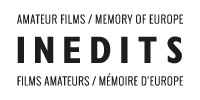News
Preservation
|A panoramic gaze on the Algerian war

Bily de Bonchamps was sent on active duty to Algeria in 1959. There he made three 8 mm films, like travel diaries sometimes of a political nature relating a soldier's life as he journeyed through the country's vast landscapes that he immortalized in wide format.
ECPAD is the French Ministry of Defence image agency. For many years it has collected and preserved amateur films often made by soldiers themselves. The agency recently acquired three 8 mm colour Kodachrome reels filmed in Algeria by Bily de Bonchamps at the end of the 1950s. He was born 18th July 1935 at Croix (Northern France), and like many of his friends carried out his military service in Germany in 1957 and 1958, in the 451st anti-aircraft light artillery division to be exact. From this experience, he brought back a photo album showing everyday garrison life as well as the German cities he visited.
Between July and November 1959 in Algeria, he made three 8 mm films featuring use of an anamorphic lens. The particular process he adopted, developed by Henri Chrétien, compressed the image as it was shot and then dilated it on projection. Bily de Bonchamps made all these films in Scope format using a Paillard Bolex H8 camera equipped with a lens from the Benoist Berthiot optics company. The films' intertitles make frequent use of the term Cinemascope, the name of the process launched by Twentieth Century Fox in 1953. For one of the films, Bily de Bonchamps is credited as the cameraman. Other credits note a certain Frederick who did the sets, Yves for continuity and Louis-Alex as recording sound. It has not been possible to confirm these mentions – the films were shot in natural settings, which would make a set designer superfluous, and the films in our possession have no sound track.
More unusual are the intertitles and some shots that demonstrate the filmmaker's political opinions. Each intertitle clearly shows his support for Algerian territory to remain part of the French Republic. The choice of shots also express his views, as when he films the sign 'This is France' seen on the seawalls at the port of Oran. Even clearer, is a sea-bathing sequence filmed on the beach at Ain el Turk in August 1959 figuring a young soldier's sand drawing of a Celtic cross – symbol of the Jeune Nation nationalist movement founded 1949. Such crosses are also seen in the animated credits for the film titled En Algérie française. Marnia. 1re partie where the letters MARNIA appear on a miniature train whose wheels are marked with red Celtic crosses. And a photograph preserved in the Bily de Bonchamps stills collection shows four soldiers absorbed by their reading of the Jeune Nation newspaper. All these images confirm the filmmaker's ideological outlook.
Bily de Bonchamps' films can be viewed as exciting travelogues narrating his life as a soldier with the ceremonies, the military convoys, his exploration of the country on leave, especially his wide-eyed discovery of Algeria's towns and countryside such as Bou Sfer, Tlemcen, Sidi bel Abbes and Oran.
These films can be viewed at the ECPAD archive, Ivry-sur-Seine (near Paris), open to all.
Olivier Racine
ECPAD - Pôle de conservation et de valorisation des archives
